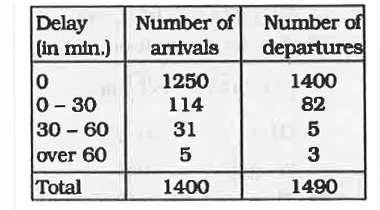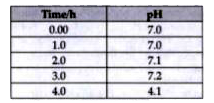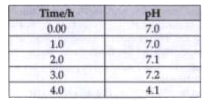Study the given table and answer the following questions. It shows the pH value of the plaque (which collects around teeth) surrounding the teeth of a child over three hours.

State the time during the day when condition is most favorable for process of tooth decay.
Step by step video & image solution for Study the given table and answer the following questions. It shows the pH value of the plaque (which collects around teeth) surrounding the teeth of a child over three hours. State the time during the day when condition is most favorable for process of tooth decay. by Chemistry experts to help you in doubts & scoring excellent marks in Class 10 exams.
Updated on:21/07/2023Topper's Solved these Questions
- ACIDS, BASES AND SALTSBOOK - OSWAL PUBLICATIONCHAPTER - ACIDS, BASES AND SALTSEXERCISE - Self Assessment - 1 (I. Objective Type Questions) C. Assertion and Reason Type Questions
2 Videos
- ACIDS, BASES AND SALTSBOOK - OSWAL PUBLICATIONCHAPTER - ACIDS, BASES AND SALTSEXERCISE - Self Assessment - 1 (D. Very Short Answer Type Questions )
3 Videos
- ACIDS, BASES AND SALTSBOOK - OSWAL PUBLICATIONCHAPTER - ACIDS, BASES AND SALTSEXERCISE - Self Assessment - 1 (I. Objective Type Questions) A. Multiple Choice Questions
3 Videos
- CARBON AND ITS COMPOUNDSBOOK - OSWAL PUBLICATIONCHAPTER - CARBON AND ITS COMPOUNDSEXERCISE - CREATING BASED QUESTIONS
23 Videos
Similar Questions
Read the following and answer the questions.
Study the given table and answer the following questions. It shows the pH value of the plaque (which collects around teeth) surrounding the teeth of a child over 3 hrs.

State the time during the day when condition is most favourable for process of tooth decay.
View SolutionStudy the given table and answer the following questions. It shows the pH value of the plaque (which collects around teeth) surrounding the teeth of a child over three hours.

What causes tooth decay?
View Solution
Knowledge Check
The table given below shows survey carried out at a railway station for the arrivals/departures of trains for the month of January, 2000. Study the table and answer the following questions.

If the punctuality of railways is defined as the number of occasions on which trains arrived and departed in time as a percentage of total number of arrivals and departures from the station, then the punctuality for the month under observation isA94.3%B91.7%C89.2%D75%
Study the given table and answer the following questions. It shows the pH value of the plaque (which collects around teeth) surrounding the teeth of a child over three hours.

The three constituents of plaque are :
View SolutionRead the following and answer the questions.
Study the given table and answer the following questions. It shows the pH value of the plaque (which collects around teeth) surrounding the teeth of a child over 3 hrs.

The nature of toothpastes commonly used to protect tooth decay is:
View SolutionStudy the given table and answer the following questions. It shows the pH value of the plaque (which collects around teeth) surrounding the teeth of a child over three hours.

The nature of toothpastes commonly used to protect tooth decay is ______.
View SolutionRead the following and answer the questions.
Study the given table and answer the following questions. It shows the pH value of the plaque (which collects around teeth) surrounding the teeth of a child over 3 hrs.

The three constituents of plaque are
View SolutionRead the following and answer the questions.
Study the given table and answer the following questions. It shows the pH value of the plaque (which collects around teeth) surrounding the teeth of a child over 3 hrs.

The pH which leads to tooth decay?
View SolutionStudy the following information and answer the following questions.
A dishonest milkman has X litre mixture of milk and water in the ratio 5 : 1 respectively. He sold mixture to three persons A, B and C in the same order. After selling milk to each person, he added certain amount of milk or water or both in the remaining mixture. The difference between milk and water with the milkman just before selling it to person C is 250 L. The table given below shows how the exchange took place.

Find the value of X.
View SolutionStudy the following information and answer the following questions.
A dishonest milkman has X litre mixture of milk and water in the ratio 5 : 1 respectively. He sold mixture to three persons A, B and C in the same order. After selling milk to each person, he added certain amount of milk or water or both in the remaining mixture. The difference between milk and water with the milkman just before selling it to person C is 250 L. The table given below shows how the exchange took place.

What is the value of Y?
View Solution
